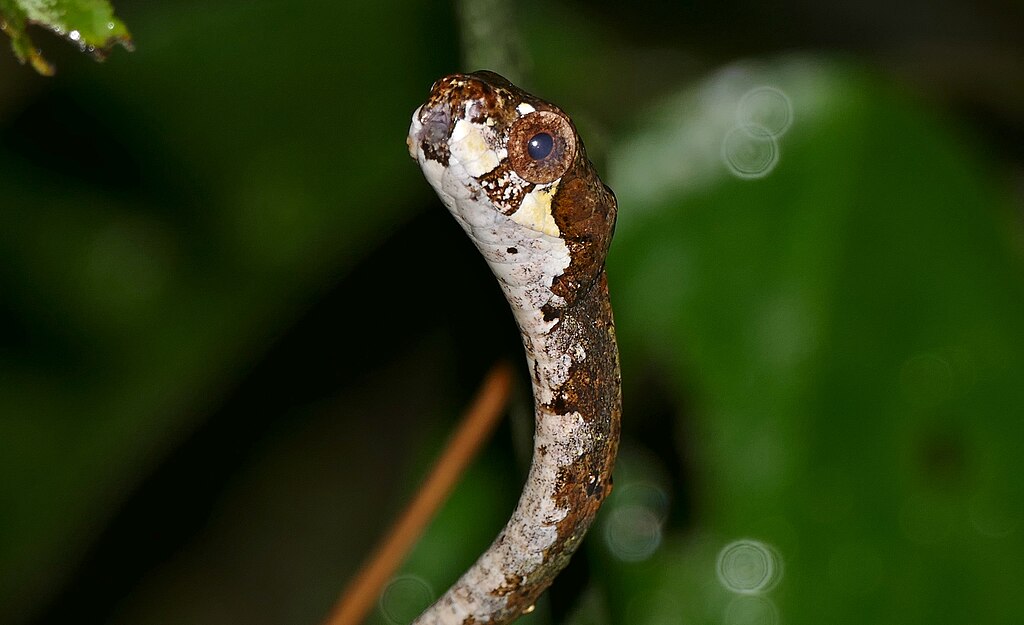Have you ever wondered if snakes truly sleep like other animals? While many creatures close both eyes and drift into unconsciousness, certain snake species have evolved a fascinating adaptation: the ability to rest with one eye partially or completely open. This unique behavior reveals much about snake evolution, survival strategies, and the complex relationship between predator and prey in the natural world. Let’s explore this intriguing aspect of snake biology and understand why having one watchful eye might be the difference between life and death for these remarkable reptiles.
The Unique Sleep Patterns of Snakes

Unlike mammals that experience distinct sleep stages including REM sleep, snakes have evolved quite different rest patterns. Snakes don’t technically “sleep” as we understand it, but rather enter periods of inactivity and reduced metabolic function. During these restful states, many snake species remain partially alert to their surroundings, maintaining some level of sensory awareness. This vigilance manifests most visibly in their eye behavior, where some snakes keep one eye partially or fully open even while their bodies show all other signs of rest. This adaptation allows them to simultaneously conserve energy while maintaining crucial environmental awareness in what scientists call unihemispheric sleep.
Unihemispheric Sleep: A Remarkable Adaptation
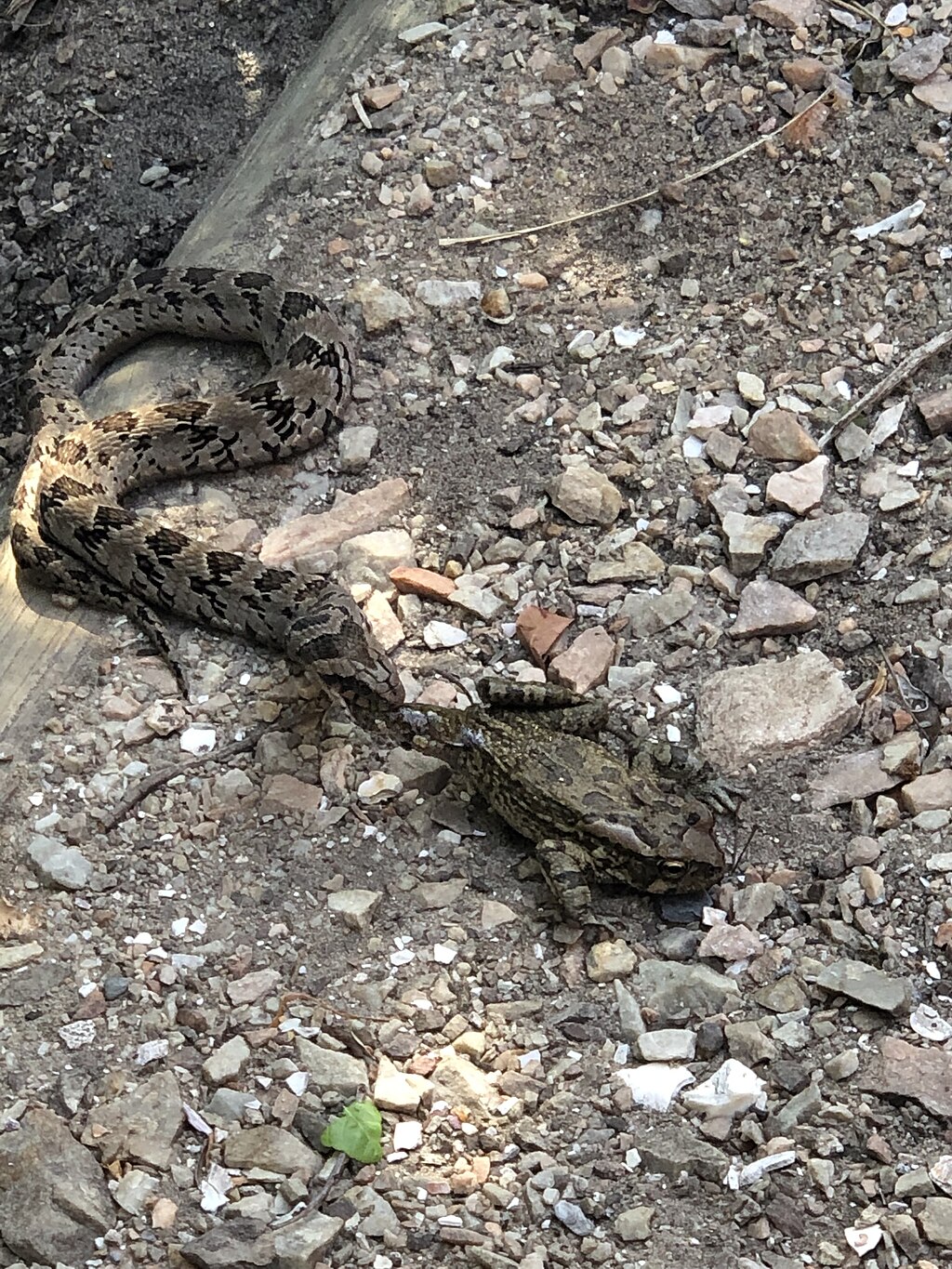
Unihemispheric sleep refers to the ability of certain animals to rest one half of their brain while keeping the other half alert and functioning. This phenomenon has been well-documented in marine mammals like dolphins and some bird species, but it also appears in certain reptiles, including some snake species. When a snake employs unihemispheric sleep, the eye connected to the alert hemisphere remains open, while the eye connected to the resting hemisphere closes. This remarkable neurological adaptation allows the snake to rest portions of its brain while still maintaining vigilance against potential threats. The alternating pattern ensures that the snake can rest adequately while never becoming completely vulnerable to predators.
Predator Vigilance in Vulnerable Moments
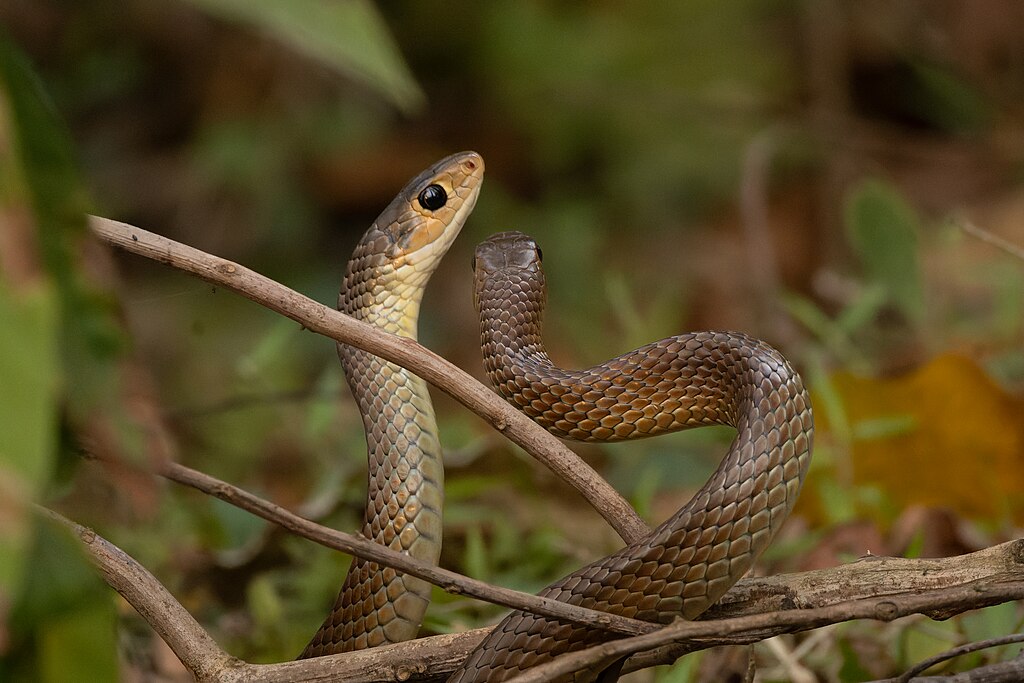
The primary evolutionary advantage of one-eyed resting is predator detection during vulnerable periods. Snakes, despite their fearsome reputation as predators, are themselves prey for numerous animals including birds of prey, larger reptiles, and mammals. When resting, a snake’s normal defenses of speed, venom, or constriction are compromised, making them especially vulnerable. The open eye serves as a constant perimeter alarm, capable of detecting movement or shadows that might indicate an approaching threat. This adaptation is particularly critical for smaller or non-venomous snake species that lack other powerful defense mechanisms and must rely primarily on early detection and evasion to survive.
Species Variation in One-Eyed Resting
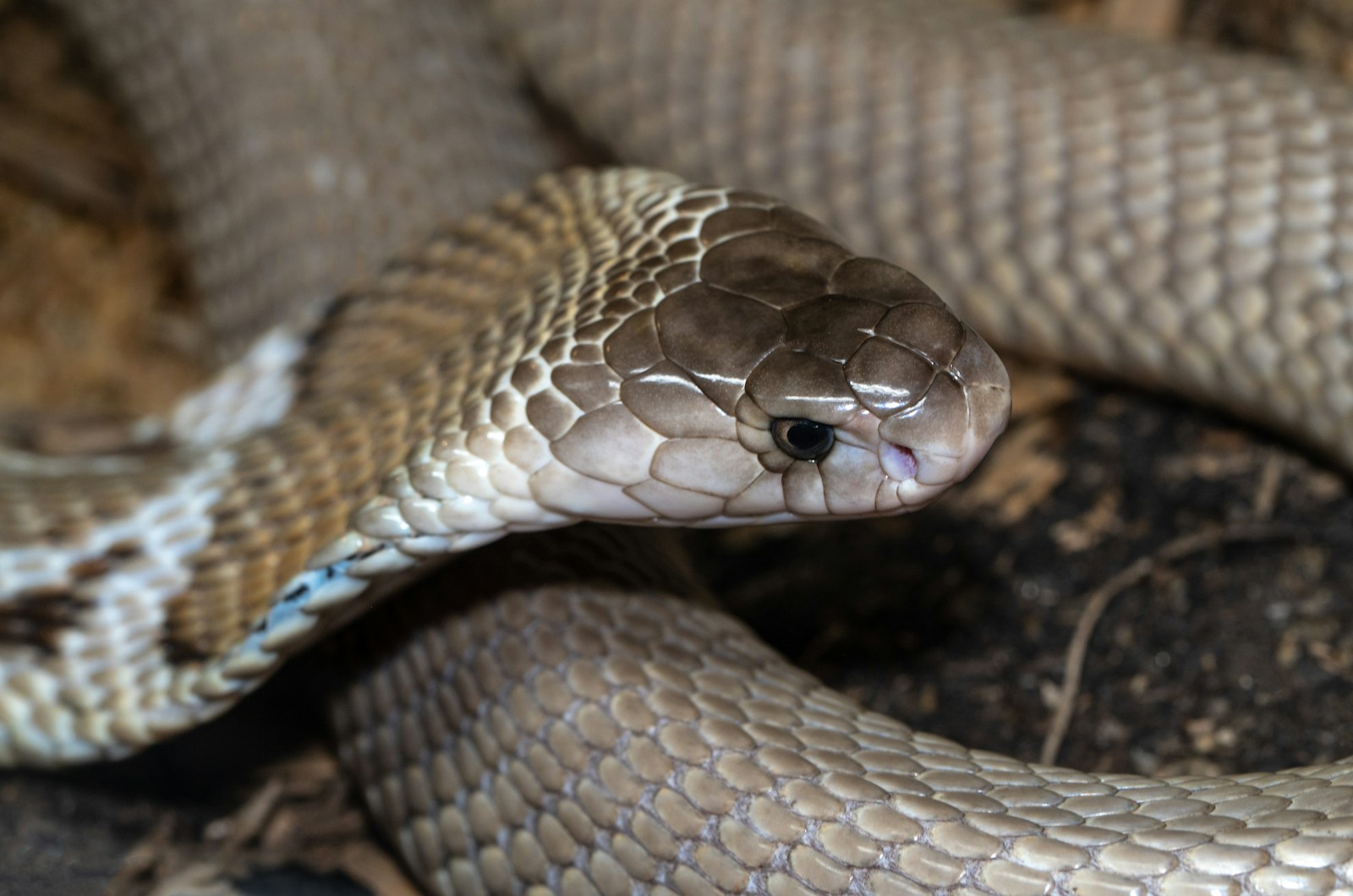
Not all snake species exhibit this one-eyed resting behavior to the same degree. The prevalence of this adaptation often correlates with the snake’s ecological niche and its position in the local food web. Arboreal (tree-dwelling) snakes like certain python species frequently demonstrate one-eyed resting, as they’re exposed to aerial predators while basking or resting on branches. Similarly, smaller ground-dwelling species that face threats from multiple directions show this vigilant behavior more consistently than larger apex predator snakes. Some species, including certain vipers and boas, have been observed rotating which eye remains open during extended resting periods, effectively giving each hemisphere of the brain alternating opportunities to recover.
The Anatomy Behind the Behavior
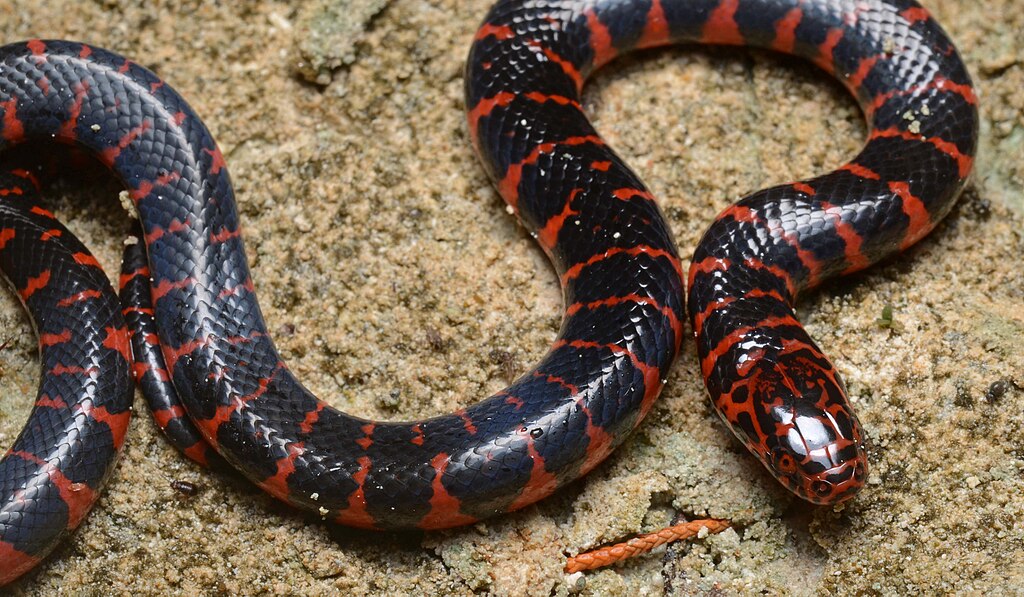
The snake’s ability to keep one eye open while resting is supported by their unique ocular anatomy. Unlike humans, snakes don’t have eyelids but instead possess a transparent scale called a brille or spectacle that permanently covers and protects each eye. This anatomical feature means that snakes don’t “close” their eyes in the traditional sense. Instead, the one-eyed resting behavior involves neural control of pupil dilation and visual processing rather than physical eye closure. The eye connected to the active brain hemisphere maintains normal pupil responses and visual processing, while the eye connected to the resting hemisphere may show different pupil behavior or reduced visual responsiveness despite remaining physically “open” behind its protective scale.
Environmental Factors Influencing Vigilance
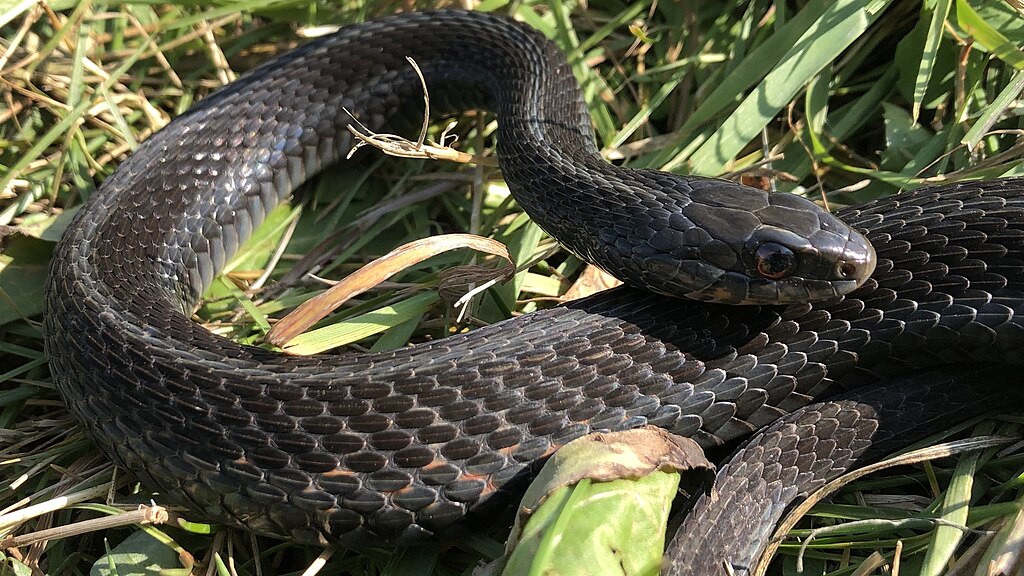
The frequency and duration of one-eyed resting behaviors are heavily influenced by environmental conditions and perceived threat levels. Snakes in high-risk environments with numerous predators tend to display more vigilant resting behaviors than those in safer habitats. Similarly, snakes may increase their vigilance during vulnerable life stages, such as after consuming a large meal when their mobility is compromised, or during shedding when their vision is temporarily impaired. Seasonal variations also impact this behavior, with many species showing increased vigilance during warmer months when both they and their predators are more active. Researchers have also observed that captive snakes in secure environments often exhibit less one-eyed vigilance than their wild counterparts, suggesting this behavior can be modulated based on threat assessment.
Brain Hemisphere Specialization
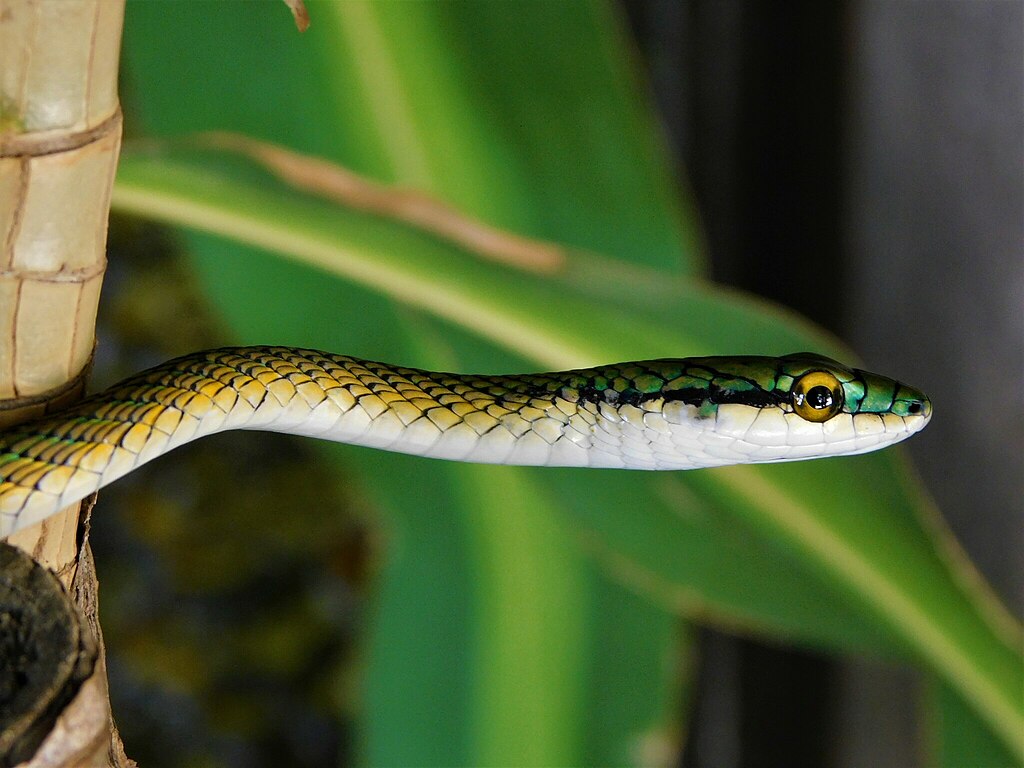
Fascinating research into unihemispheric sleep has revealed that the brain hemispheres of snakes may have specialized functions during these vigilant rest periods. The active hemisphere generally maintains not only visual processing but also motor readiness, allowing the snake to react quickly if a threat is detected. Meanwhile, the resting hemisphere undergoes recovery processes essential for neural health and memory consolidation. This specialization represents an evolutionary compromise between the competing needs for rest and vigilance. Some studies suggest that snakes may even alternate which hemisphere remains active during extended rest periods, ensuring that both sides of the brain receive necessary recovery time without ever leaving the animal completely vulnerable.
Comparison with Other Animal Sleep Adaptations

The snake’s one-eyed resting behavior is part of a broader spectrum of fascinating sleep adaptations across the animal kingdom. Marine mammals like dolphins and whales must continue swimming and breathing while sleeping, so they rest one hemisphere at a time while maintaining movement. Many birds, particularly migratory species, can sleep with one eye open during long flights or when resting in exposed areas. Even certain lizard species show similar vigilant rest patterns. What makes the snake’s adaptation particularly interesting is how it integrates with their other sensory systems, including heat-sensing pits in some species, which provide additional threat detection capabilities even during rest periods. These parallel adaptations across different animal lineages demonstrate how the fundamental challenge of balancing rest with survival has driven convergent evolutionary solutions.
Energy Conservation Benefits
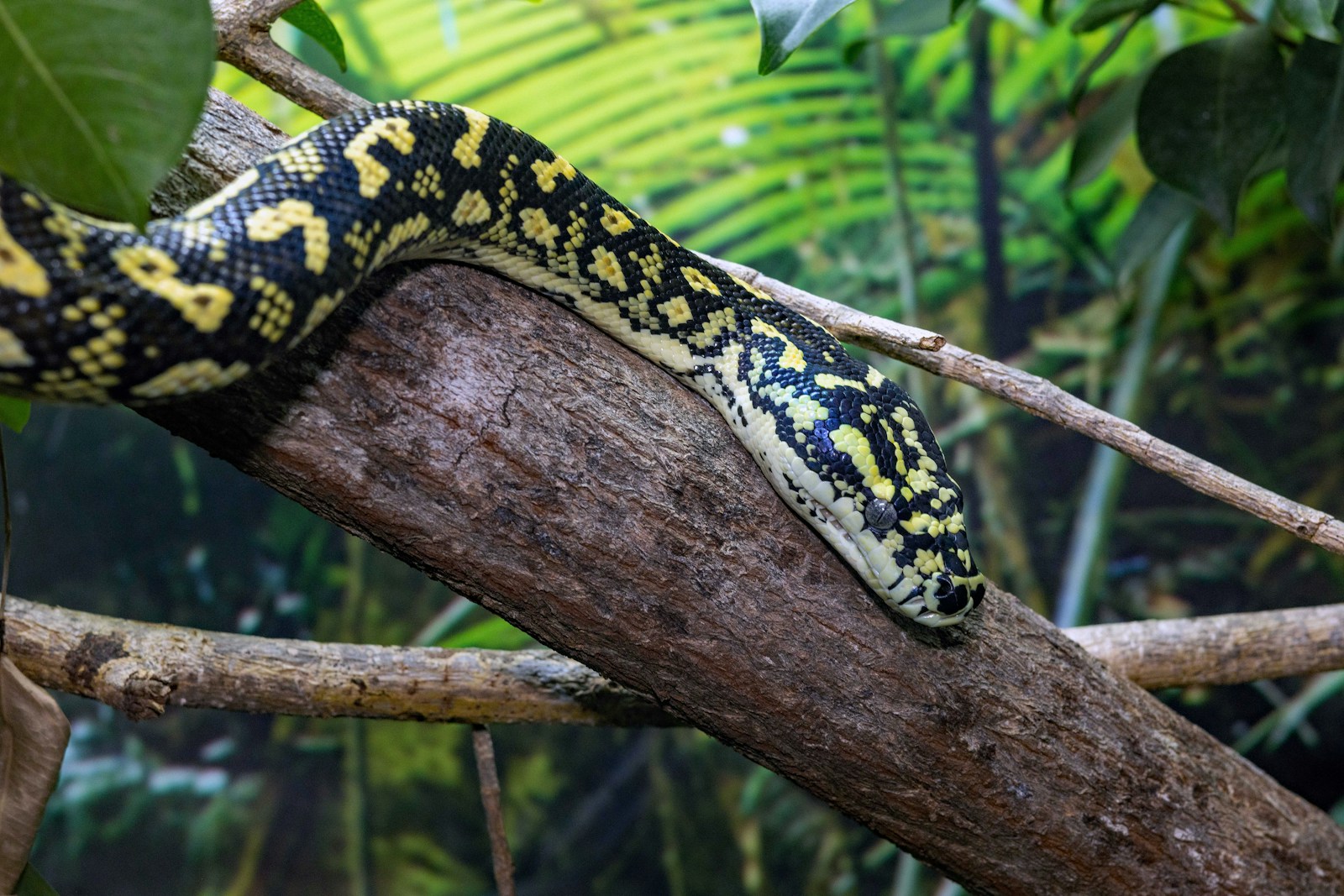
Beyond predator detection, the one-eyed resting behavior offers snakes significant energy conservation benefits. Being ectothermic (cold-blooded), snakes already expend less energy on maintaining body temperature than mammals, but their unihemispheric sleep pattern provides additional efficiency. By keeping only half the brain fully active at a time, snakes reduce their overall energy expenditure during rest periods while still maintaining essential vigilance. This energy-efficient approach to rest is particularly valuable for snakes that may go extended periods between meals. Some species that undergo seasonal dormancy or brumation in colder months may modify this behavior based on metabolic needs, increasing the proportion of full rest during these energy-conservation periods while still maintaining periodic vigilance.
Prey Detection During Rest
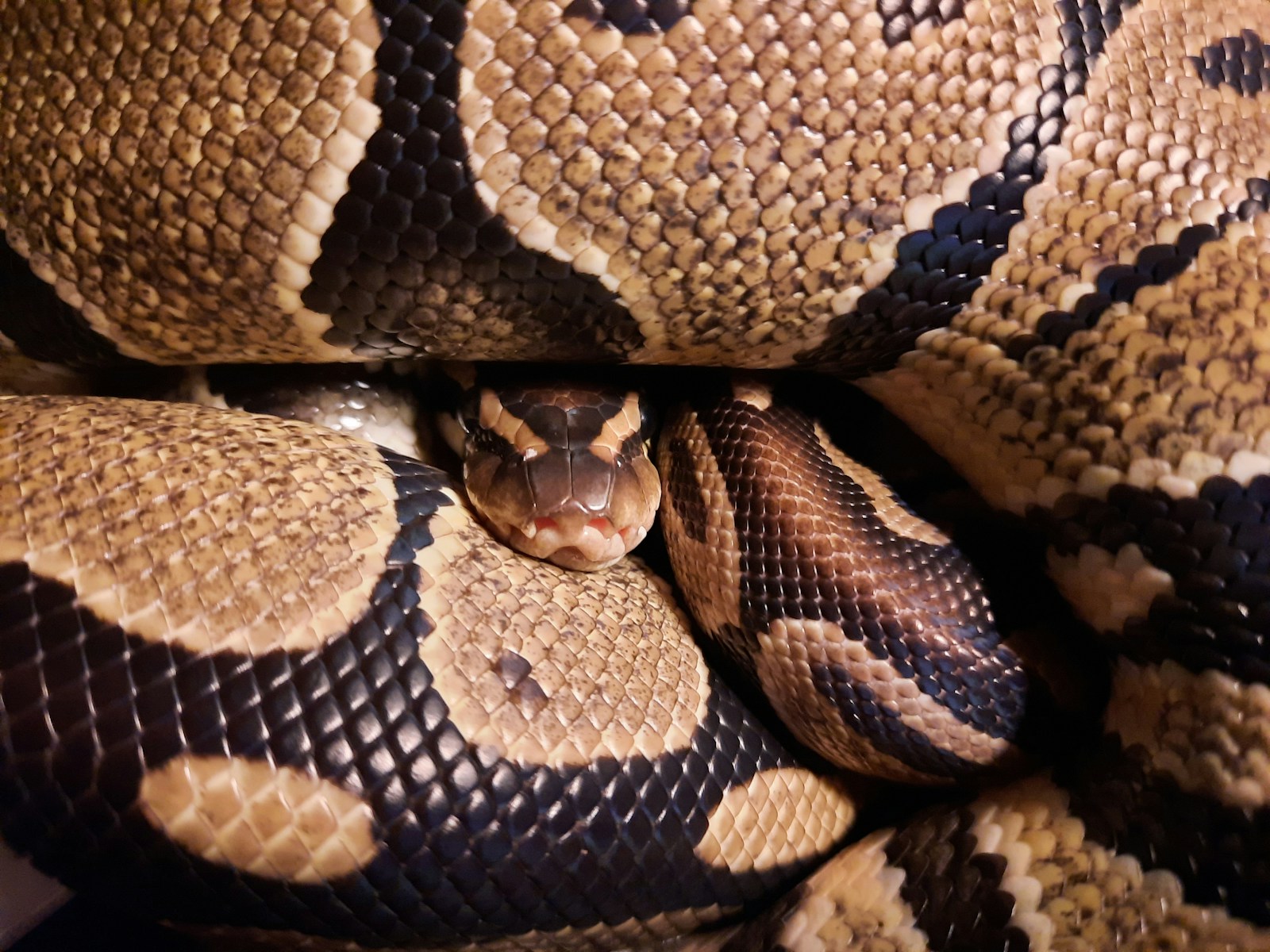
While predator avoidance is the primary benefit of one-eyed resting, this behavior occasionally serves a secondary hunting advantage. The vigilant eye allows certain opportunistic snake species to detect potential prey that might wander nearby during their rest period. This dual-purpose adaptation means a resting snake might suddenly become the predator if suitable prey happens to come within striking range. Ambush predators like vipers and certain python species may particularly benefit from this aspect of vigilant resting. Researchers have documented cases where snakes that appeared to be resting have successfully captured prey with minimal movement from their rest position, demonstrating the hunting advantage this constant visual awareness can provide.
Implications for Captive Snake Care
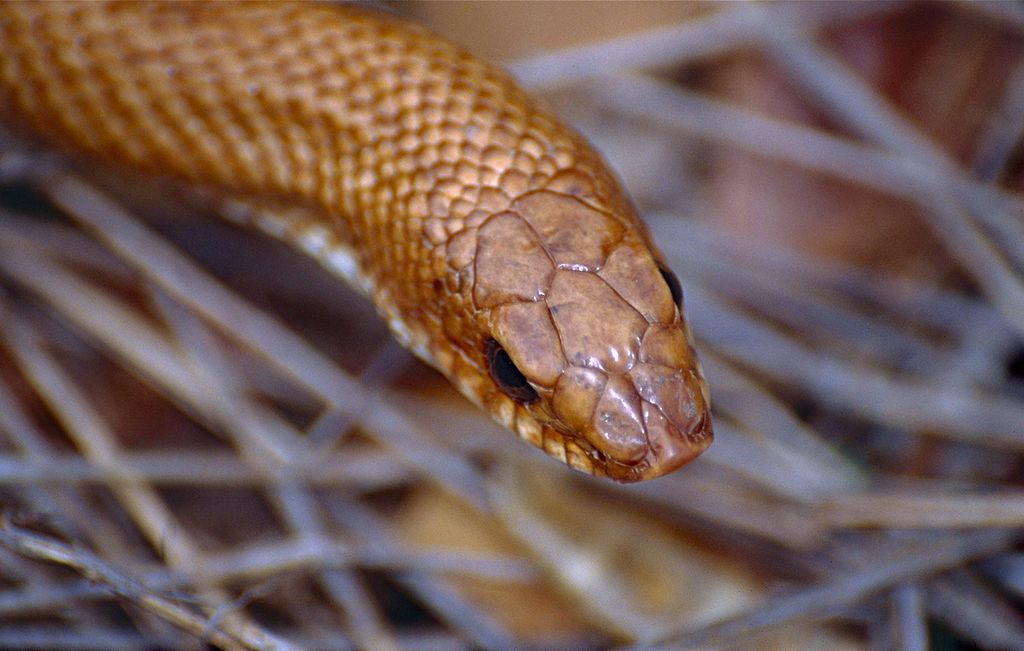
Understanding the one-eyed resting behavior has important implications for proper captive snake husbandry. Snake owners and zoological facilities should provide enclosures that allow for appropriate rest while addressing the snake’s instinctual need for security. This may include providing adequate hiding spots where the snake can feel more secure and potentially engage in more complete rest behaviors. Regular observation of a captive snake’s resting patterns can also serve as a potential health indicator, as changes in their typical vigilance behaviors might signal stress or illness. Proper enclosure design should balance the snake’s need for environmental enrichment with sufficient security features that reduce unnecessary stress-induced vigilance, allowing for more natural rest patterns.
Ongoing Research and Remaining Questions
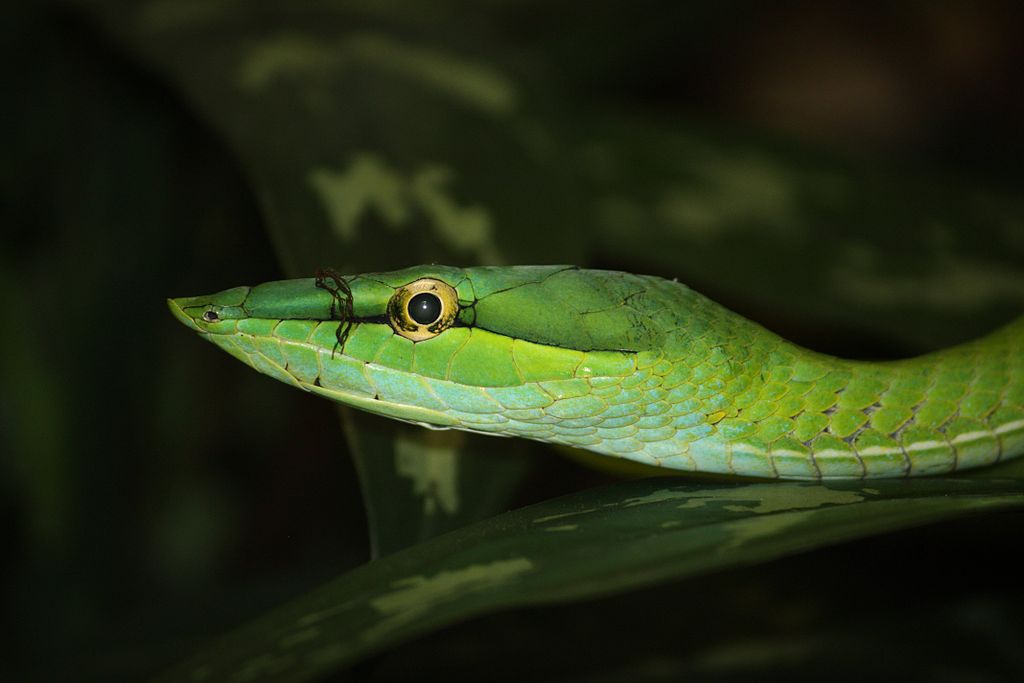
The field of reptile sleep biology continues to evolve as researchers develop new methods to study these fascinating behaviors. Current investigations are exploring the neurological mechanisms that allow for unihemispheric sleep in reptiles, including how visual information is processed differently between active and resting brain hemispheres. Questions remain about the quality of rest achieved during these vigilant states and how it compares to the more complete rest observed in mammals. Other research directions include investigating whether different snake species exhibit varying patterns of hemisphere alternation during extended rest periods. Advanced imaging techniques and minimally invasive monitoring methods promise to reveal more about this remarkable adaptation in the coming years, potentially offering insights not just into snake biology but into the fundamental nature of sleep itself.
Evolutionary Origins of Vigilant Rest

The evolutionary history of unihemispheric sleep in reptiles traces back to ancient survival pressures that shaped the development of the reptilian brain. This adaptation likely emerged as early reptiles faced the competing demands of predator avoidance and the neurological need for rest periods. Paleontological and comparative physiological evidence suggests that this ability may have been present in early reptilian ancestors, potentially as far back as the Triassic period. The retention of this trait in modern snakes, alongside similar adaptations in birds (which share reptilian ancestry), indicates its profound survival value across evolutionary time. The fact that this adaptation appears independently in several animal lineages suggests that the challenge of remaining vigilant during rest represents a powerful evolutionary force that has repeatedly driven the development of similar neurological solutions.
Conclusion
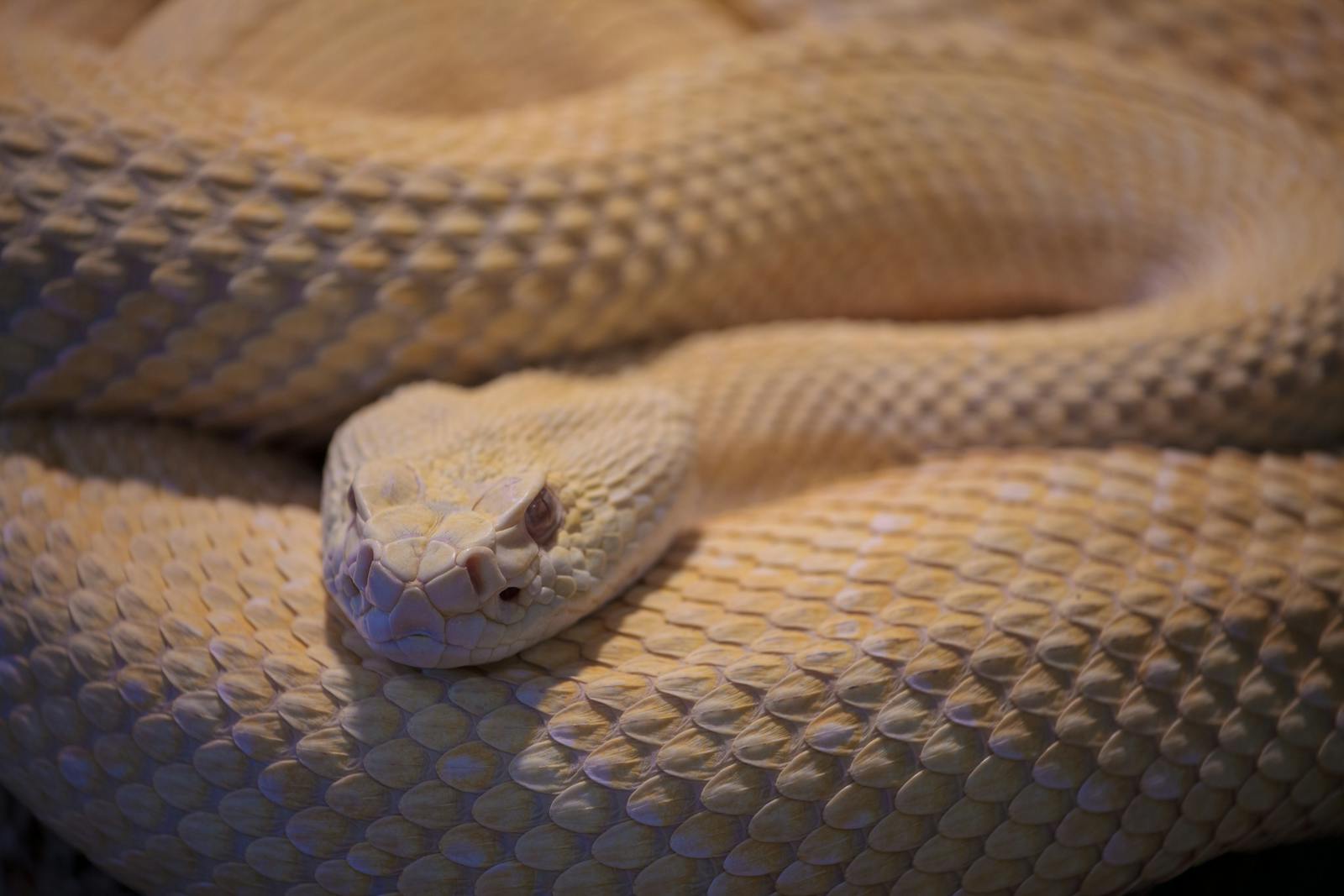
The snake’s ability to rest with one eye open represents one of nature’s elegant solutions to the universal challenge of vulnerability during sleep. This adaptation balances the competing biological necessities of neural rest and predator vigilance, allowing these remarkable reptiles to survive in environments filled with threats. Through specialized brain function, energy-efficient rest strategies, and continuous sensory awareness, snakes have evolved a rest pattern that perfectly suits their ecological niche. As we continue to study these fascinating behaviors, we gain not only insights into reptile biology but also a deeper appreciation for the incredible diversity of adaptations that allow different species to thrive in their environments. The snake’s vigilant rest reminds us that in nature, even moments of apparent stillness can conceal complex and sophisticated survival strategies.

